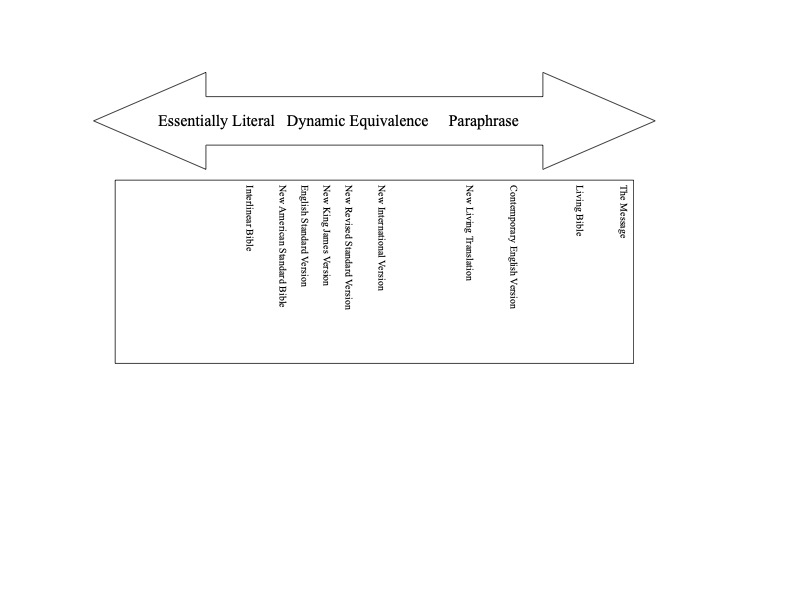Choosing Bible Translations Today

Part 2 – Key Recommendations
Today I want to give a few practical recommendations and tips for selecting Bible translations for use. Once again, I have placed a graphic at the end of the post which I will refer to in the recommendations below.
First, if you can not read Greek and Hebrew fluently, you should use several different English translations. this will allow you to see all of the possible meanings for a given text. Because there are many possible shades of meaning of any Greek or Hebrew phrase, using a variety of translations will give you a greater chance of seeing the potential shades of meaning in any given text. Furthermore, it can help prevent seizing upon a particular word in your favorite translation that may not be the best translation for a given Greek or Hebrew word or phrase. Simply put, be very careful of stressing the importance of a specific word or phrase if your translation is alone in using that word or phrase!
Second, you should choose translations that use different translation methods. Note the graphic below, and choose translations from different parts of the continuum. In other words, it is good to consult one or more translations that are more on the “essentially literal” side of the spectrum as well as one or more translations that are in the dynamic equivalence part of the spectrum. This will allow you to see both how translators view the original on a word-for-word as well as a thought-for-thought basis. You can also include a paraphrase to see how the translator interprets the passage – but remember these are not really “translations” but rather the thoughts of one or more people as to what a given passage means.
Third, your main Bible should be one of the translations on the left half of the graphic. I would not recommend anything less essentially literal than the NIV for your regular Bible. Bibles further to the right of the NIV on the graphic (such as the New Living Translation and the Message) as simply too paraphrastic for use as your main Bible, especially for study. This would also include the Passion translation, which is not on the graphic but has grown in popularity in recent years. If I were to place it on the graphic, it would be well out to the right, near the Message.
Fourth, use or consult essentially literal translations for serious study. If you are doing a word study, they are more likely to consistently translate the underlying Greek and Hebrew words with the same or a very similar English word. Even if your main reading Bible is the NIV, when doing serious study, I would recommend always consulting the ESV, KJV, or NASB.
Fifth, you should have at least one translation that is based on a different set of manuscripts. Thus, if your main Bible is the NIV, have either the King James or New King James as well. On the other hand, if your preferred Bible is the King James or New King James, always consult one of the other translations along with it. At the minimum, pay careful attention to the translation notes given in the margins/footnotes in modern translations.
Finally, It is helpful to sometimes use a paraphrase to “shock” you into giving fresh attention to the passage. Because these versions are not really translations, they sometimes come up with a really good insight into what the Biblical author was trying to communicate. They are not useful as your main Bible version, but they can be a good addition to your Bible reading.
In the next post, we will look at an unusual but very helpful translation – the NET Bible.
In Christ,
Bret

